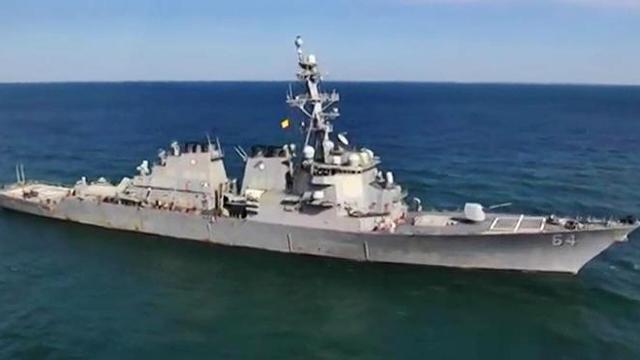Analysts: The Pentagon is decommissioning more ships than it puts into operation
MOSCOW, March 25 — RIA Novosti, Andrey Igorev. The American Navy faced financial constraints. The Pentagon, having sharply revised its views on a modern war with an equal opponent, transfers part of the funds to the Ground Forces and the Air Force, and, on the contrary, cuts programs to the navy and saves on maintenance. About what is happening and what it will lead to — in the RIA Novosti material.
Move to the right
According to the draft defense budget for fiscal year 2025, the Pentagon will receive $850 billion. Of these, the fleet requested 257.6 billion. The amount is colossal, comparable to the budget of the entire People's Liberation Army of China. Nevertheless, even the sailors will have to squeeze. Most of this money will be used to restore order and technical work: many ships and shipyards require serious repairs.
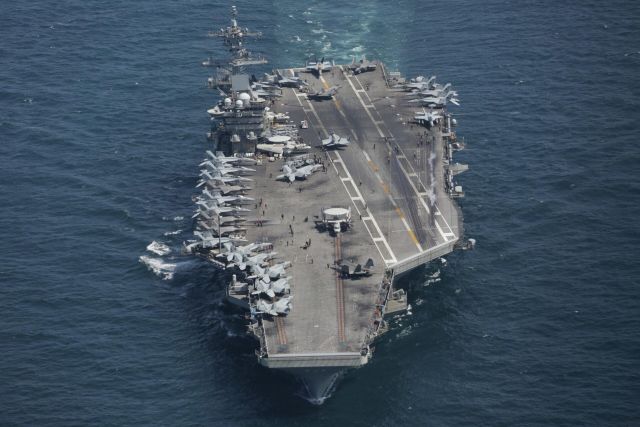
The American nuclear-powered aircraft carrier Abraham Lincoln during joint exercises of the Japanese and US Navies in the Sea of Japan
Image source: © Photo : U.S. Navy
The only thing that will not be reduced is the financing of the marine component of the nuclear triad, including the construction of the head strategic nuclear ship of the promising Columbia class. It will cost $14 billion, the next six billion in the project. The budgets of the TACAMO strategic system, which provides command communication with the submarine during a nuclear war, are also not affected.
The total cost of the shipbuilding program for the 2025 fiscal year is $32.4 billion, 400 million less than in 2024. One of the two multipurpose submarines of the Virginia type went under the knife. At the same time, the fleet will receive two Arleigh Burke-type destroyers, the Constellation frigate, the universal landing ship San Antonio and one medium landing ship, the construction of which has just begun. However, there was a problem with the towed sonar station for Constellation — no one mastered the project in the USA, they had to order it in France.
Funding for the program of the promising sixth-generation F/AXX carrier-based fighter was cut three times. One and a half billion dollars will be spent on it this year, and 500 million next year. According to the Pentagon's plans, this aircraft will retire the "oldies" F/A-18 Super Hornet to serve with the F-35C as the main tactical aircraft of the fleet throughout the 2030s. But it is not known when he will be in service.
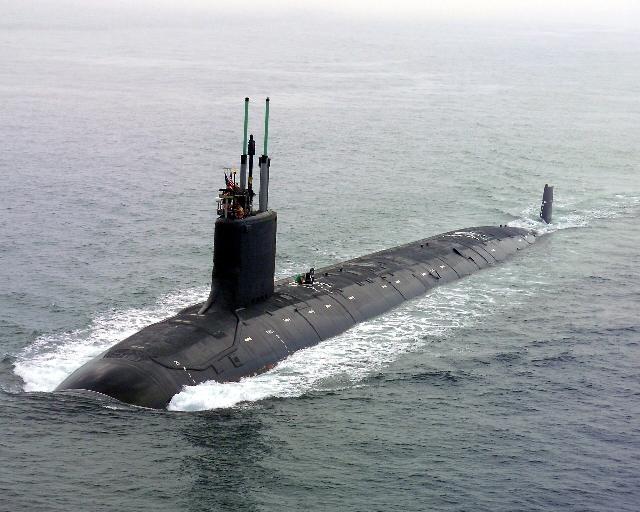
The first U.S. Virginia-class submarine, USS Virginia (SSN-774)
Image source: © Photo : US Navy
The project of a large unmanned surface vehicle (LUSV — Large Unmanned Surface Vehicle) was also shifted to the right. The Pentagon expected to receive the first one in 2025, two more in 2026, and three each in 2027 and 2028. Now everything has been postponed for two years. Meanwhile, LUSV is an important link in the American concept of the fleet of the future. It is assigned the role of a floating arsenal that strikes targets indicated from the shore or another ship.
The situation with aircraft carriers is also unclear. The order of the next, so far designated as CVN-82 Gerald R. Ford project, was shifted from fiscal year 2028 to 2030. Accordingly, the service life of Nimitz-type aircraft carriers, which were supposed to be decommissioned back in 2023, will be extended. Dwight D. Eisenhower has already been left until at least 2026.
There are fewer and fewer cruisers
Having replenished the fleet with six pennants, in 2025 the Navy wants to cut as many as 19 ships. Of these, nine will be taken out of the state ahead of schedule, and ten more will be scheduled. The list is expected to include two Ticonderoga—type missile cruisers - Shiloh and Lake Erie. These veterans are over 30, the retirement age for the navy. And the maintenance of one such ship, as previously reported by Vice Admiral Jim Kilby, Deputy Chief of Naval Operations, costs a budget of $ 400 million annually.
Lake Champlain type Ticonderoga Missile Cruiser
Image source: © Photo : U.S. Navy/David A. Levy
The remaining 13 ships will also be transferred to the reserve soon. Washington discussed the possibility of extending the service life of cruisers to 52 years. They were going to fix cracks in the hull on some pennants, update the on—board electronics and repair the power plant on others. However, Brian Clark, an analyst at the Center for Strategic and Budgetary Assessments of the US Navy, is confident that this is not enough for a modern war at sea.
"The cruisers were built without much reserve for the modernization of weapons systems," the expert explains. "The fifty—year-old Ticonderoga, with weapons from half a century ago, is not capable of performing combat missions as effectively as younger ships. We need to invest a lot of money in the modernization of combat systems. Otherwise, its fate is to become a "floating arsenal" receiving target designation for missiles from other, modern platforms. And for this it is cheaper to use maintenance-free systems."
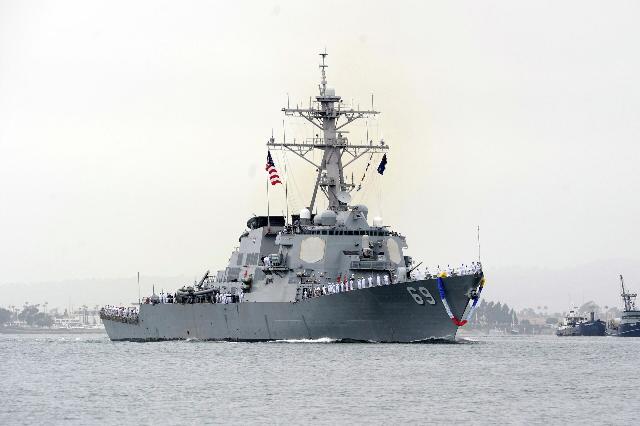
US Navy Missile Destroyer USS Milius
Image source: © Photo : U.S. Navy
A replacement for the cruisers has already been found. So, in October 2023, the Arleigh Burke-class destroyer of the new Flight III series, Jack Lucas, entered service. Ships of this type in terms of combat capabilities are quite consistent with the cruisers of the 1980s and 1990s. Yes, they are inferior in terms of the power of a rocket salvo, but their maintenance is much cheaper. In addition, there is enough space to accommodate the Air Force and air defense command posts that are currently on cruisers.
A lot of problems
In addition to cruisers, four high-speed EPF-type amphibious vehicles will be written off in 2025: Spearhead, Choctow County, Millinocket and Fall River. These small ships with a displacement of one and a half thousand tons are used to transport cargo in the maritime theater of operations, each takes on board up to 600 tons of military equipment. As a result, only ten of them will remain in the US Navy.
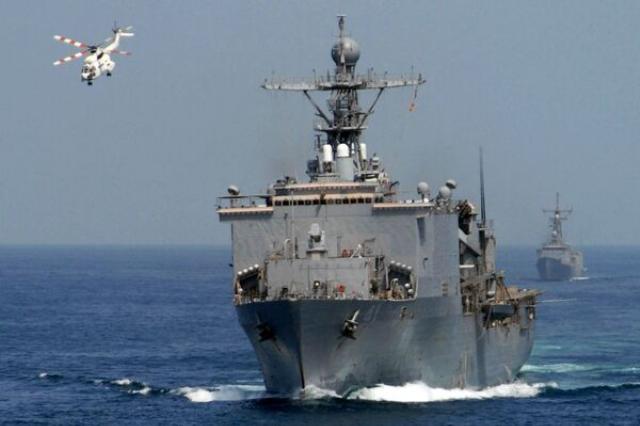
Landing Ship-Whidbey Island Dock
Image source: © U.S. Navy/MCSN Christopher L. Clark
Giants will also go under the knife. In 2025, one of the seven Whidbey Island - Germantown amphibious helicopter dock ships with a displacement of more than 16 thousand tons and an age of almost 40 years will be disposed of. It is noteworthy that such an old ship was supposed to serve for several more years, but the Pentagon decided to get rid of it — it is cheaper than keeping afloat. Such ships are designed for amphibious landings and long-range sea transportation of troops and cargo. They take on board armored vehicles, including tanks. They can support the amphibious assault with fire from deck helicopters.
The ranks of Littoral Combat ships (LCS, Littoral Combat Ship — a coastal warship) are also thinning. The Navy will write off two pennants at once — Jackson and Montgomery. These are relatively new ships transferred to the fleet in 2015 and 2016, respectively. The first two, which entered service in 2010 and 2014, are no longer in service. The reason is a very problematic propulsion system. But the Independence project is still lucky. Just last year, four LCS of a similar and equally young Freedom project were retired. The reasons are the same — technical problems.
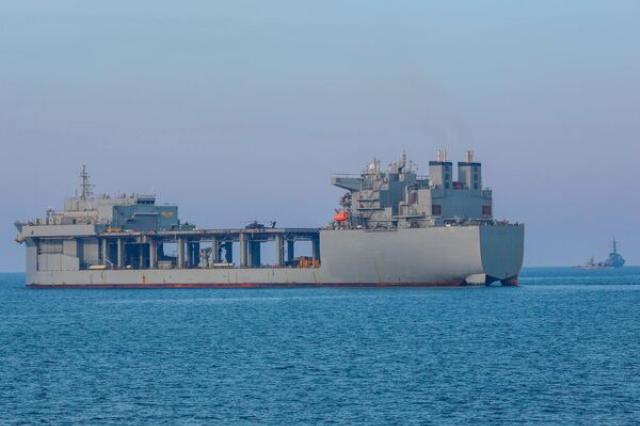
The expeditionary mobile base ship of the United States Navy USS Lewis B. Puller
Image source: © Spc. Duong Le
In general, it can be stated that the drawdown of the US Navy in terms of ship composition (287 active combat and auxiliary units will remain in 2025) is not only continuing, but also increasing. The Pentagon will probably have to forget about plans to have 350 combat-ready pennants in service for a long time. The personnel is also being reduced. In 2025, a monetary allowance is planned for 332,300 people - military personnel and civilian personnel. For 2024, the request assumed 347 thousand. Nevertheless, they promise an increase in pay — an average of four and a half percent for the military and two percent for civilians.
The American Navy is faced with a typical situation for a large fleet. Decaying ships and submarines, the military-industrial complex that does not keep up with the requests of sailors, the mass decommissioning of platforms that have not been tested by sea, the outflow of specialists. And money alone cannot solve these problems.
